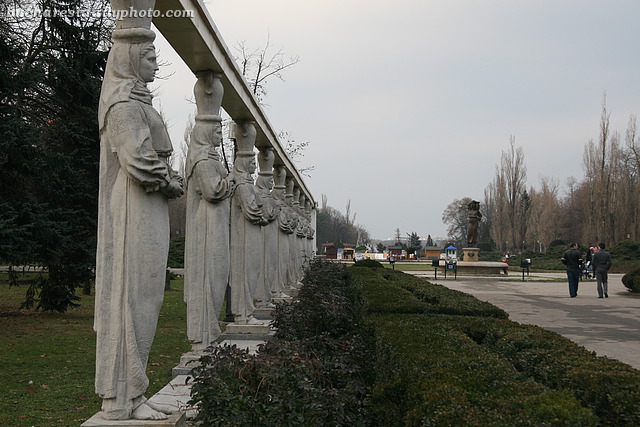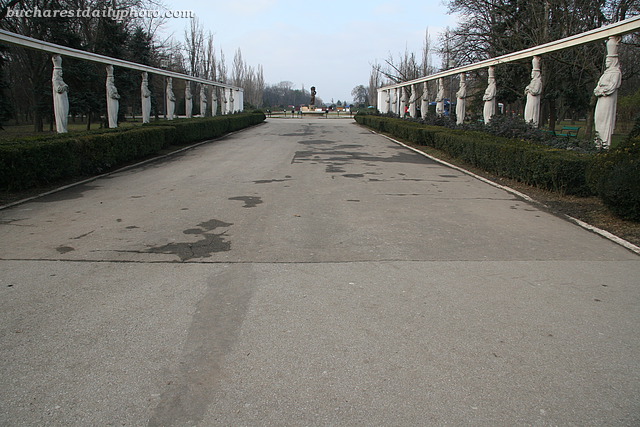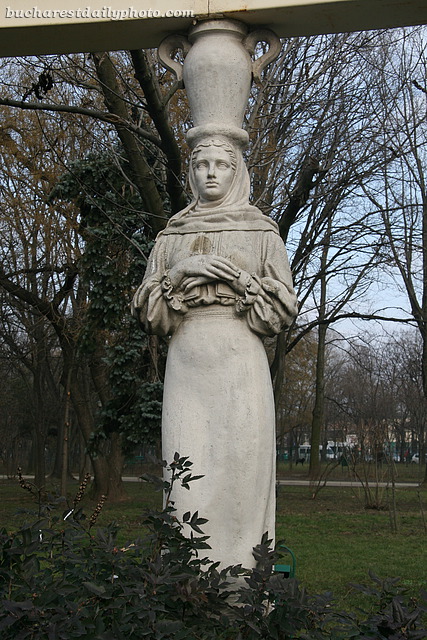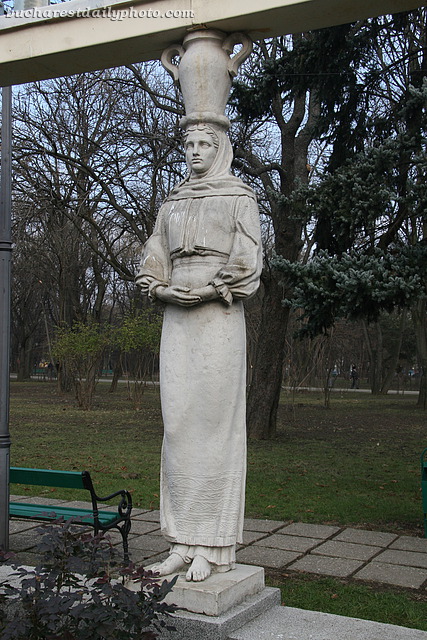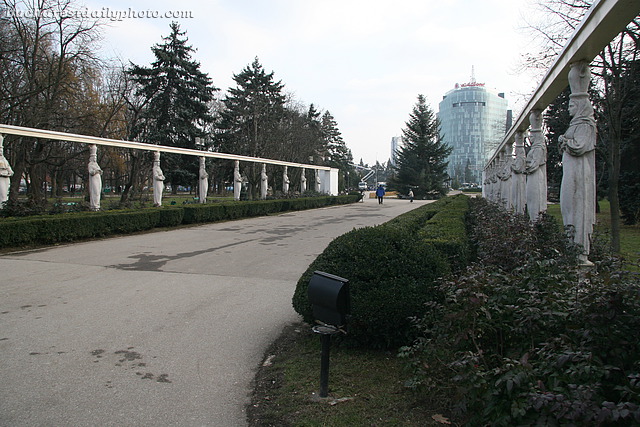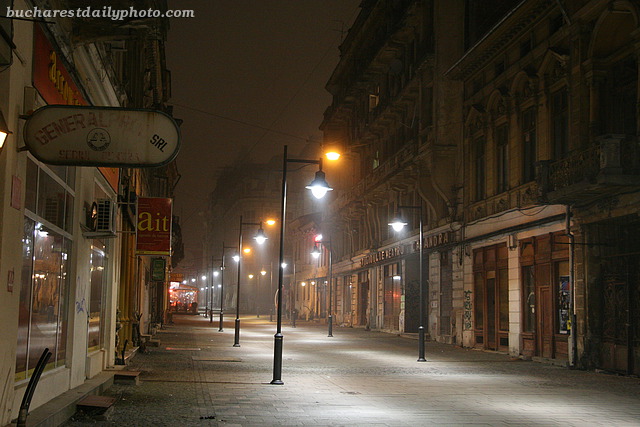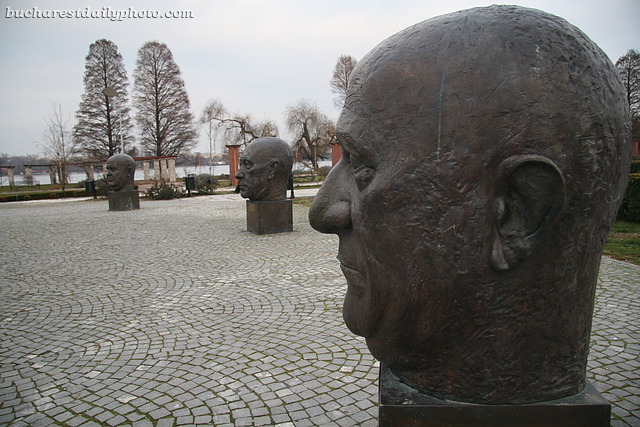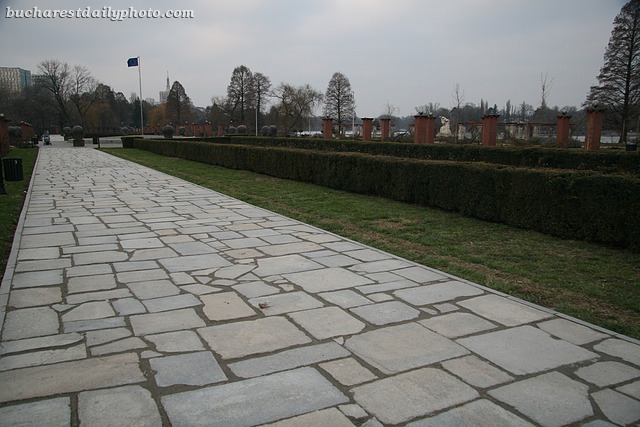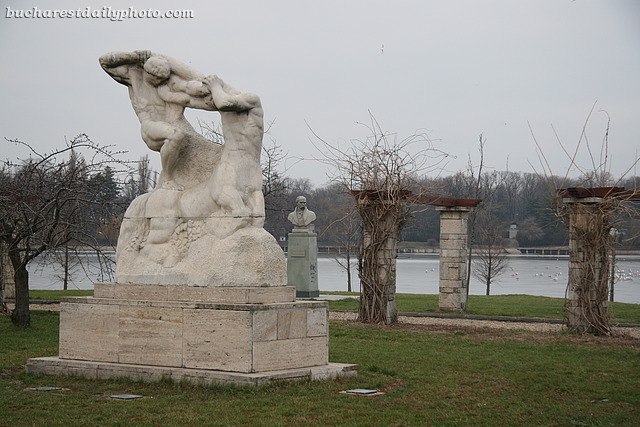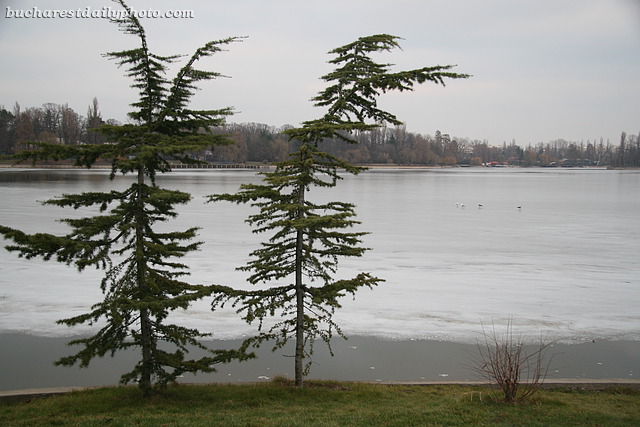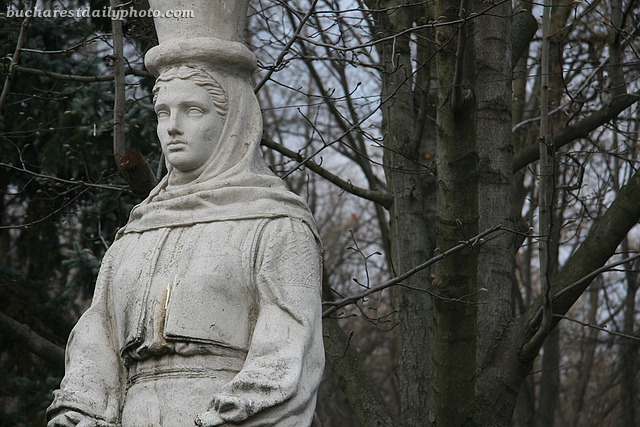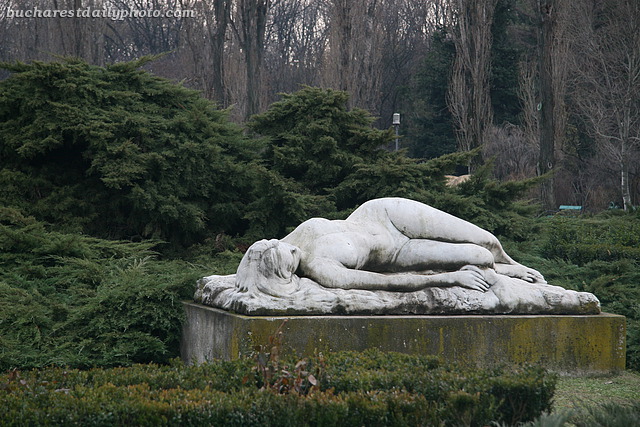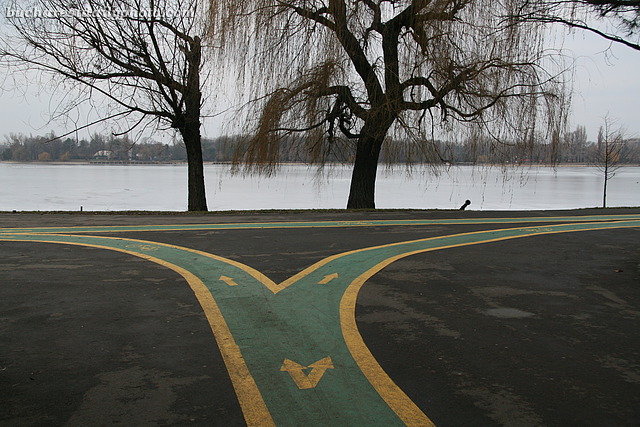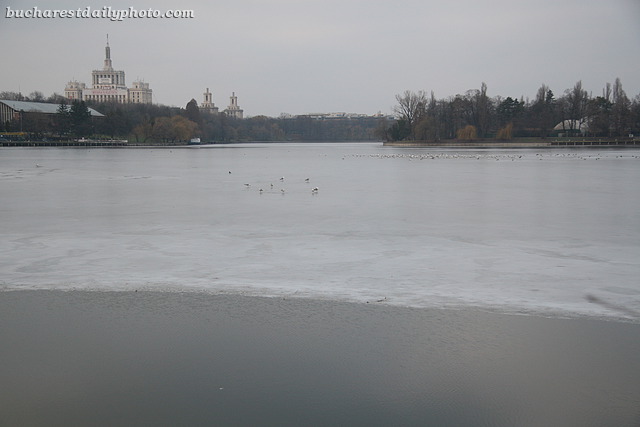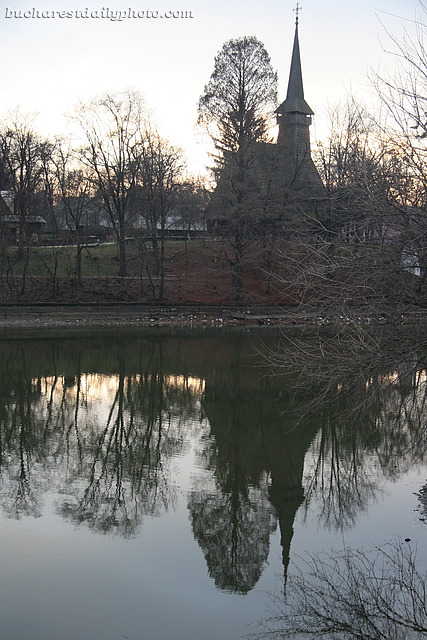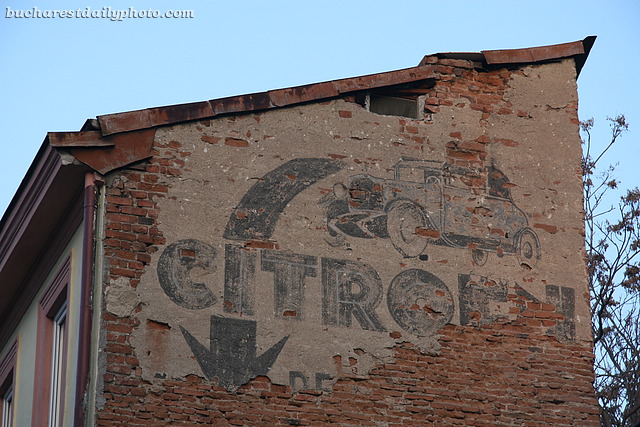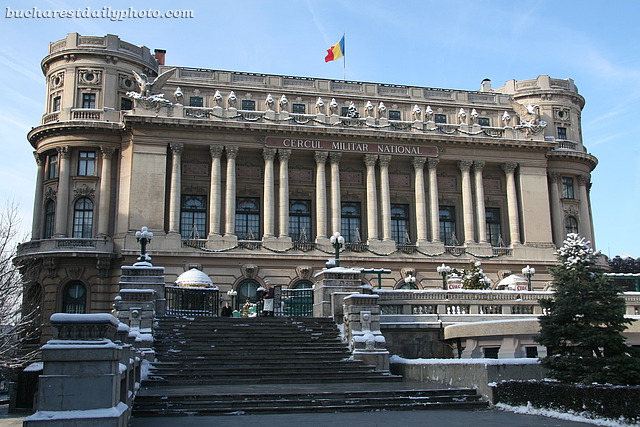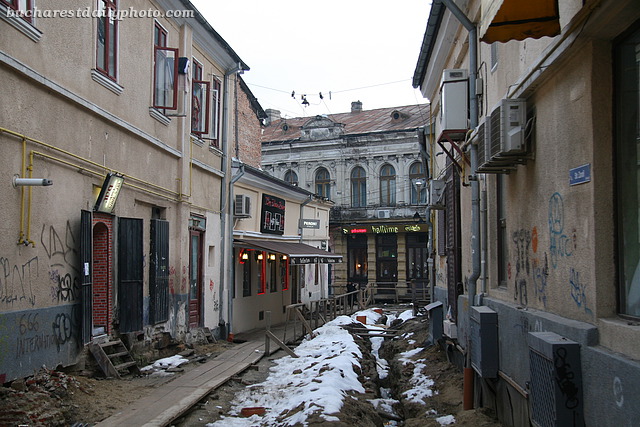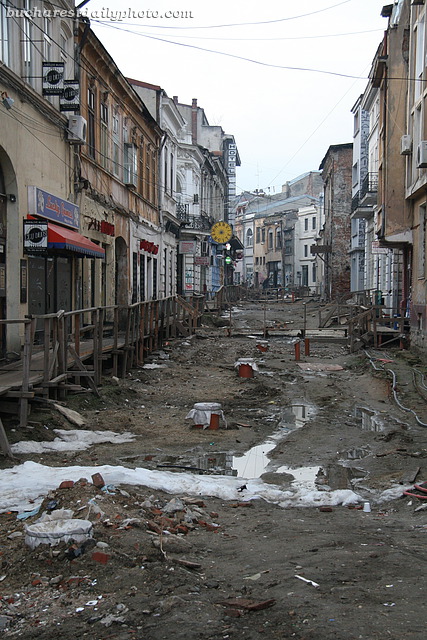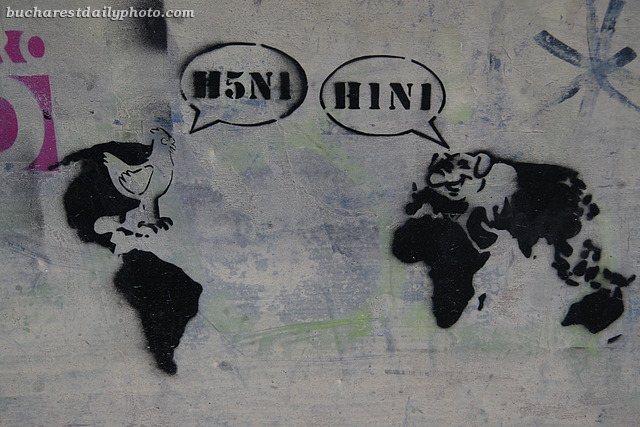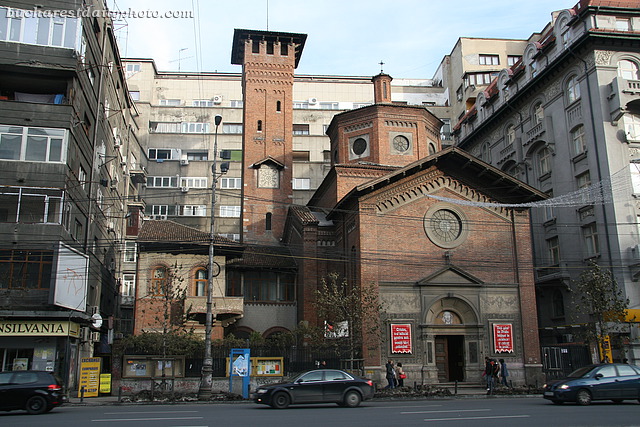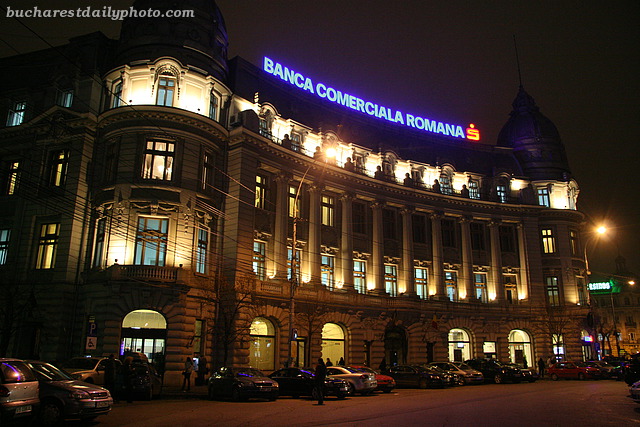Because one of the photos from the “Winter in the park” series has raised some questions I decided to show the entire work of art that contains that statue, work that was clipped by my framing. The ensemble is called “The Alley of the Cariatides” by Constatin Baraschi (November 17, 1902 – March 22, 1966) and consists of two strings of 10 statues on each side of the alley. The statues represent Romanian peasant women, dressed in traditional clothing and carrying an amphora on their heads. There are two types of statues and they are differentiated by the position of their hands. The work was unveiled in 1936 but what we see today is not the original, which was destroyed during communism to make space for a statue of Stalin, but a reconstruction done in 2005 using the original molds. I don’t know how correct this information is but I’ve also read on the web that “The Alley of the Cariatides” caused quite a stir when it was originally unveiled, stir determined by two facts: first, that this was a classical arrangement but the subjects were peasants and second, the fact that the peasants were barefoot.
Today is Theme Day at the City Daily Photo, a community of bloggers who like photographing their cities. Today’s theme is: Best photo of the year 2009. Click here to view thumbnails for all participants
I couldn’t decide which photo from last year I like best so I picked the one that proved to be the most popular, meaning the one who got the most comments. It represents Bucharest’s Old Town (Historic Quarter) on a late November night. With the summer terraces gone, the streets in the Old Center look deserted, even though many of the cafes lining the streets are full until late at night. The photo shows Franceză Street on a Thursday around midnight.
One of the attractions in Herăstrău park is the small “Island of roses” which can be reached via two arched bridges. There, among flowerbeds and walking alleys you can find the “Monument of the Founding Fathers of the European Union”, a collection of 12 sculpted heads arranged in a circle, each statue about 1.2 meters tall, and showing like its name says, the famous people involved in the founding of the EU. Their author is the artist Ionel Stoicescu and the monument was unveiled on Europe Day, May 9, 2006 when Romania was still a candidate to join the EU. More photos from the island following:
The park featured in today’s photos is Herăstrău Park, the largest of Bucharest’s parks, which is located in the northern part of Bucharest. The park encloses the shores of the Herăstrău Lake which is one of the dozen lakes stretching along the northern border of Bucharest. Before 1930 this area was an unhealthy swamp, which was drained between 1930 and 1935 and the park, modeled by the landscape architects Pinard and Rebhuhn, was opened in 1936. In the summer the park is a popular place for hanging out, its shaded alleys being a good place to take refuge from the heat. It is also popular with walkers, joggers and cyclists. The Village Museum, previously featured on the blog is located in the park. There are also plenty of small cafes, restaurants and fast food vendors, also children’s playgrounds and a boat rental booth.
In the winter the park is quiet and its dormant feel makes it look like it’s hibernating. The statue above is part of a structure which can be found at the Charles de Gaulle Square entrance.
Lying girl statue
Looks like we have at least two choices in life 🙂
During one of my walks around the city I was exploring the quarter behind Cocor store, when I happened to spot this Citroen ad up high on a building wall. It looked like an old ad, maybe one from between the wars but I couldn’t hope that something like this escaped without being destroyed during the communist years. Once home I searched the web, reading forums and found out that the add is probably from the 70s when it was painted for a movie that was shot at that location. Looks nice, nonetheless.
It’s time for another example of ornate French architecture. Here’s proof that Bucharest has it own wedding cake! 🙂 The building in today’s photo is the National Military Club (Cercul Militar Naţional in Romanian), designed in French neo-Classical style by Dimitrie Maimarolu, Victor Ştefanescu and Ernest Doneaud. It was designed to be a social, cultural and educational centre for the Romanian Army. Its construction started in 1911 and ended in 1923. Most of the funds were donated by the Romanian Army officers. The building has numerous reception halls and meeting rooms, a theatre, a bookshop, art galleries. The Military Circle was built on the spot left free by the demolishing of Sărindar monastery church, built in 1652. The monastery was damaged in the 1838 earthquake, after which it deteriorated slowly, and was in the end abandoned and demolished in 1907.
Joking bitterly about the flu pandemics of the last few years. I found this stencil in the Old Town, on Nicolae Tonitza Street.
Even if my title didn’t spell it out, I don’t think it would have taken you more than a few seconds to identify this building. The campanile and the Lombard Romanesque style speak for themselves. The Italian Church of the Most Holy Redeemer is a Roman Catholic Church built in 1915-1916 using funds donated by the Vittorio Emanuele III, the Holy See, the Italian Embassy in Bucharest and the Italian community in Romania which in 1915 counted about 7000 people. It is the property of the Italian government and is located on the busiest boulevard in Bucharest, Nicolae Bălcescu. The architects were Mario Stoppa and Giuseppe Furaboschi. The first appointed priest, Antonio Mantica, served here until December 1949 when he was arrested by the communists and forced to live Romania. The newly appointed priest, Clemente Gatti, served until March 1951 when he also was arrested, sentenced to 15 years in prison and later deported. The church was closed until 1968 when it was opened with the occasion of a state visit by the Italian Prime Minister Amintore Fanfani. Following the visit, the church remained open, but only a few services a year were performed, on special occasions like Easter, Christmas, the Assumption of Mary etc. Finally, the Italian Church was reopened in 1989 after the Romanian Revolution. Services are held daily in Romanian, and on Sundays in Romanian, Italian and Polish. The parish house was added in 1924 and for a while served as the Italian school. The campanile is 27.75 meters tall and carries 4 large bells. The surrounding tall buildings were raised in the 1930’s altering the space around the church.
I like shooting night time pictures of Bucharest. I guess that’s because, like many big cities, Bucharest feels like a different place at night, a calmer, not as chaotic and demanding place as during the day. This is why you’ve already seen many night shots on my blog and there are more to come.
Remember the dome featured in the “white blankets” photo from two days ago? It belongs to the building in today’s photo, the classical and elegant headquarters of the Romanian Commercial Bank, built in 1906 by architect Oscar Maugsch for the Generala Insurance Company.
